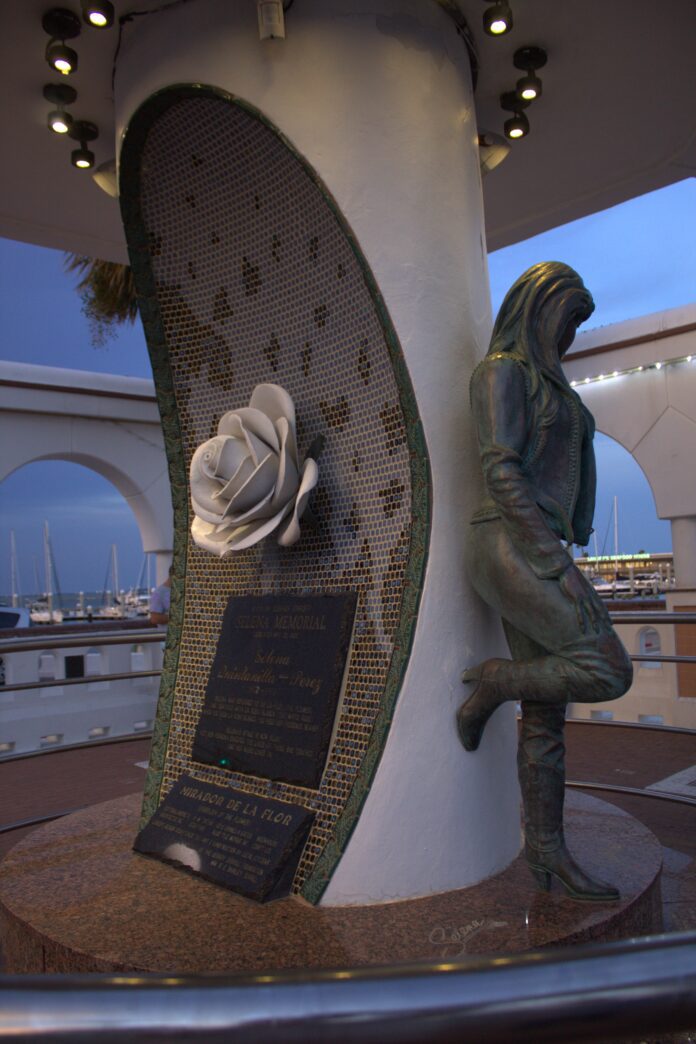The importance of Tejano representation during Hispanic Heritage Month
For me, one of the most shocking things about coming to UD was how no one seemed to know who I was talking about when I talked about “Selena.” I grew up knowing that her cumbias were essential songs to play at weddings and quinceañeras. The festival created in her honor, Fiesta de la Flor, attracts thousands of fans from all over the world, so the lack of familiarity surrounding her life and discography took me aback.
For Hispanic Heritage Month, I wanted to highlight a Hispanic artist who not only left an important legacy and paved the way for other Hispanic artists, but also challenged traditional notions of what it means to be Hispanic or Latino.
Selena Quintanilla was born in Lake Jackson, Texas on April 16, 1971, to Abraham and Marcela Quintanilla. Her father moved Selena and her two siblings, Abraham III (A.B.) and Suzette, to his hometown of Corpus Christi, Texas – which also happens to be my hometown. When the kids were old enough, he formed them into a family band with Selena on lead vocals, Suzette on the drums and A.B. on the keyboard.
Abraham had a dream of making music with his family since he didn’t succeed with his own band, Los Dinos. To honor their dad’s contribution to music, they named the new band Selena y Los Dinos. Although she was a part of a band, she is more commonly referred to as Selena.
Selena y Los Dinos began to gain popularity in South Texas where there were large Spanish speaking communities because of the genre of music that they produced. One of Selena’s many nicknames is “The Queen of Tejano Music.”
Generally speaking, a Tejano is defined as a resident of the state of Texas culturally descended from the original Spanish-speaking settlers of Texas and northern Mexico. Tejano culture combines the honky-tonk South with the vibrancy of its Latin roots, creating its own kind of music, dance, food and even language. As a Hispanic, Selena identified with it, and it’s the label that I closely identify with as well.
Selena didn’t grow up speaking Spanish, leading her to face backlash from her own community for being “No Sabo,” a label for a Hispanic or Latino whose first language is not Spanish, typically as a result of being a second-generation American or higher. Selena’s father didn’t speak much Spanish, but he made Selena learn how to sing in Spanish. She understood this effort as the bridge between her two worlds. Throughout her life, she captivated audiences with her powerful voice, charming stage presence and innovative sound.
Along with her brother, A.B., she is credited with popularizing “techno cumbia,” which is the mixing of the traditional cumbia sound with electronic sounds. Examples of this can be found in a myriad of her songs including “Baila Esta Cumbia,” “Bidi Bidi Bom Bom” and “La Carcacha.” In 1994, she became the first female Tejano artist to win a Grammy for Best Mexican-American Album and had many successful tours in North and Latin America.
Not only was she an accomplished musician, but she was also a budding fashion designer and business owner. She loved fashion and makeup and even opened up her own clothing store inspired by the outfits she wore on stage that were created by her and her mother.
Some of her most iconic photos are from when she was on stage sporting a bedazzled bustier or a sparkly purple jumpsuit. Both her music and personal style were inspired by her contemporaries like Diana Ross, Madonna, and Donna Summers. She continues to be a source of style inspiration for people who share her aesthetic.
Tragically, on March 31, 1995, Selena was shot and killed by Yolanda Saldívar, one of her confidants and the president of her fan club. Saldívar was previously confronted by Selena and her family for allegedly stealing money from them. The day she was killed, Saldívar had promised to meet Selena alone at a local motel to resolve the problem.
Selena’s fans all around the world were shocked and heartbroken at the news. After her passing, memorials went up in Corpus Christi, and Jennifer Lopez got her big break by portraying Selena in her 1997 biopic. Her importance to our town is unavoidable. If you walk downtown, you will surely stumble across the Mirador de la Flor which holds a bronze statue of the singer sporting her signature smile.
Selena represents a particular sect of Hispanic culture that transcends beyond what language we speak. She was a singer-songwriter, daughter, sister, wife, designer, philanthropist and businesswoman. Her legacy continues to inspire people to follow their dreams and to create a life that they can be proud of.
